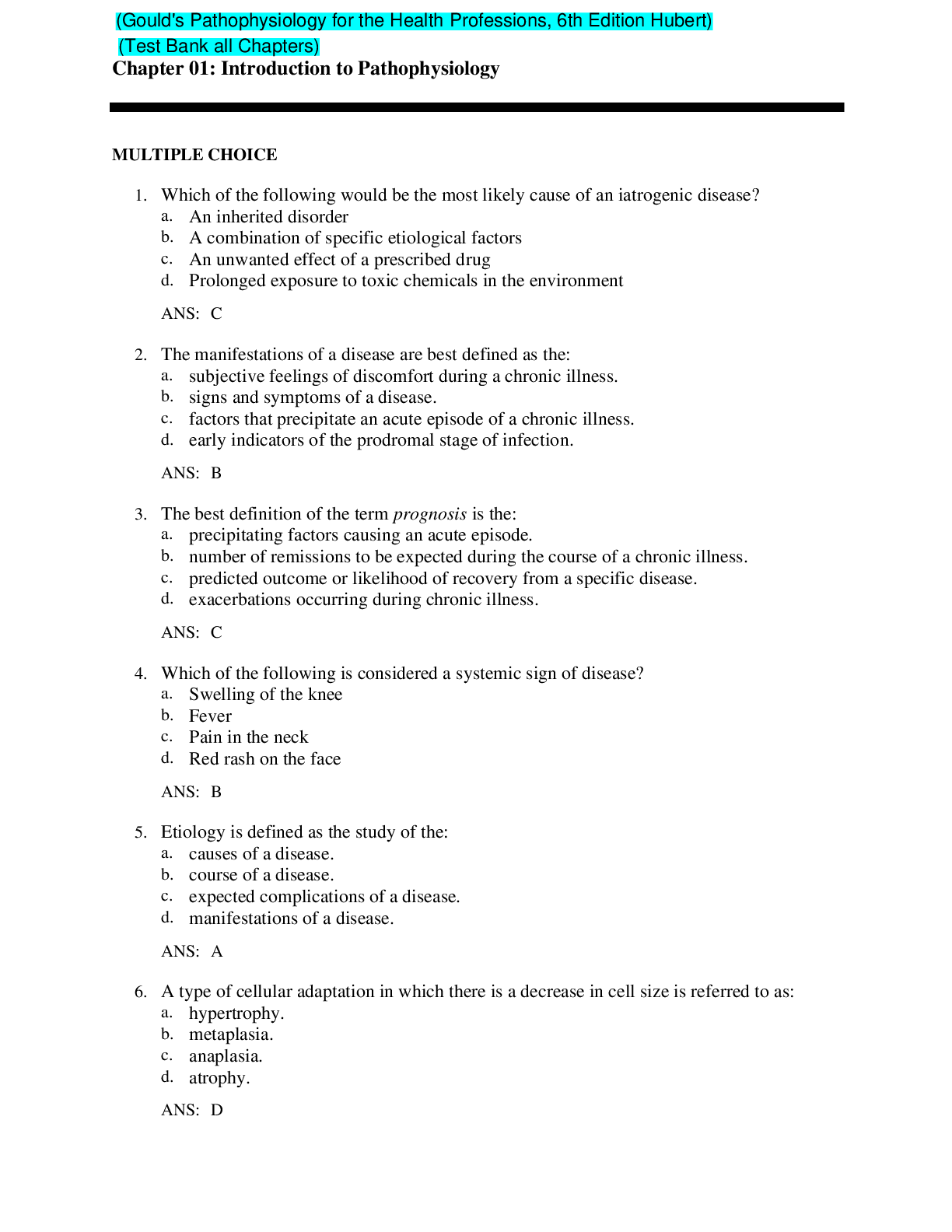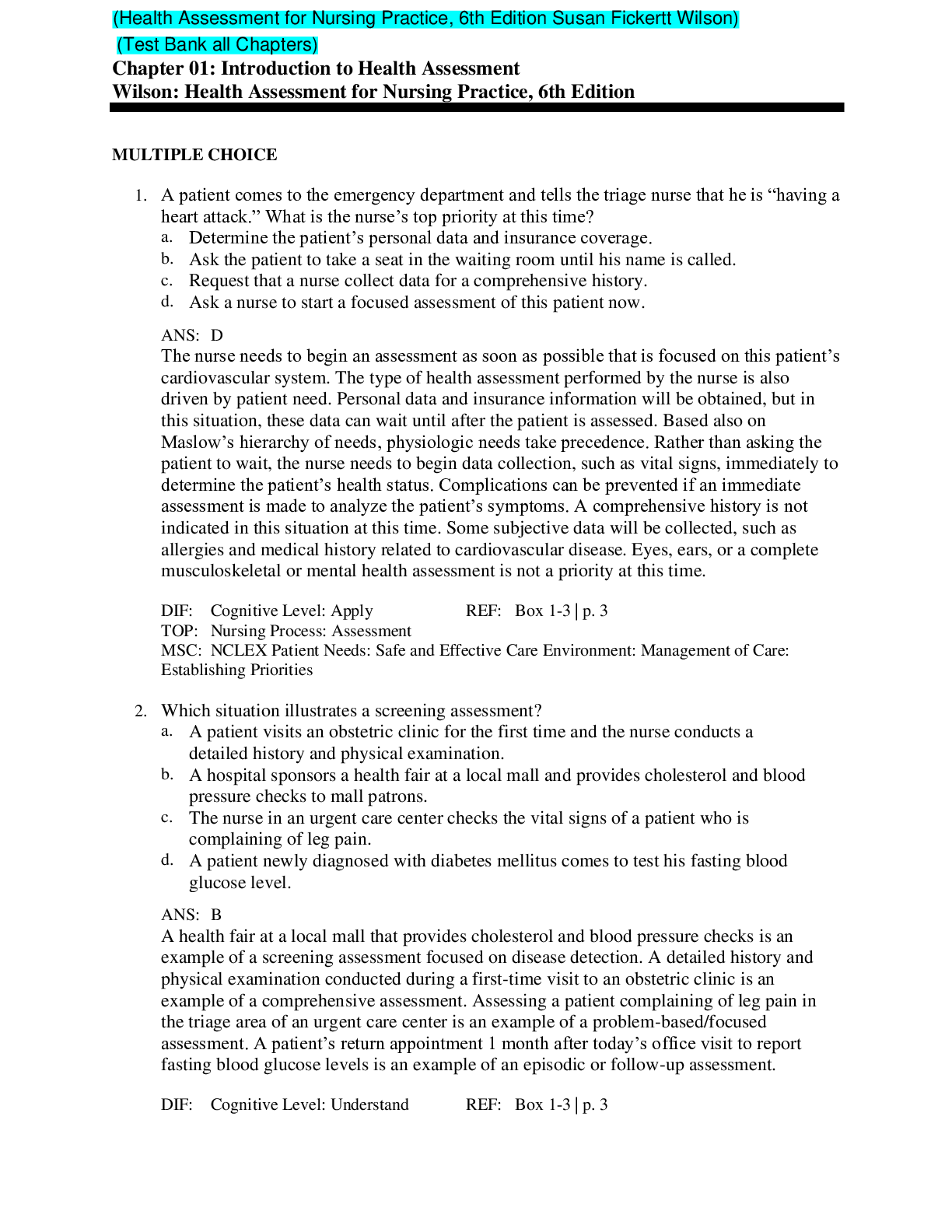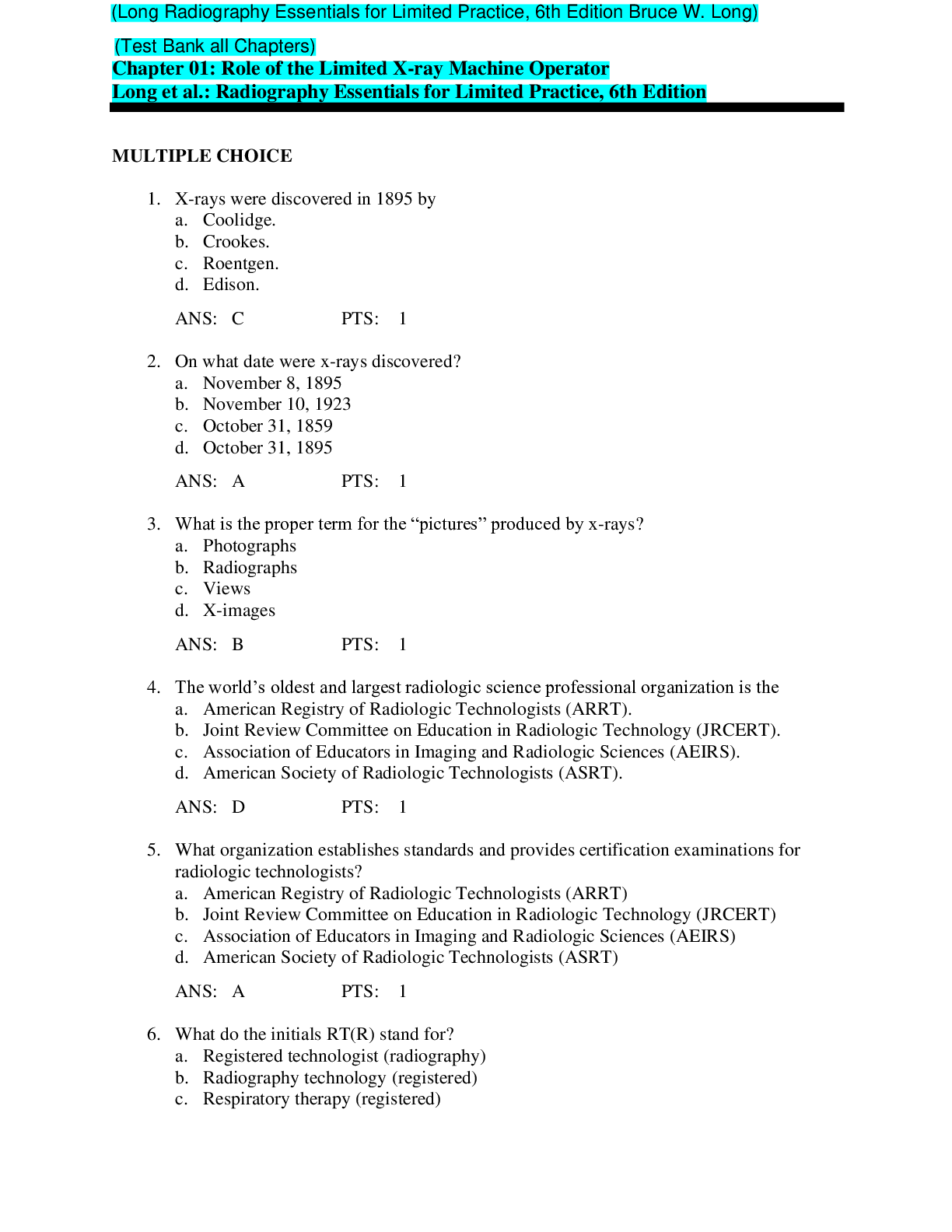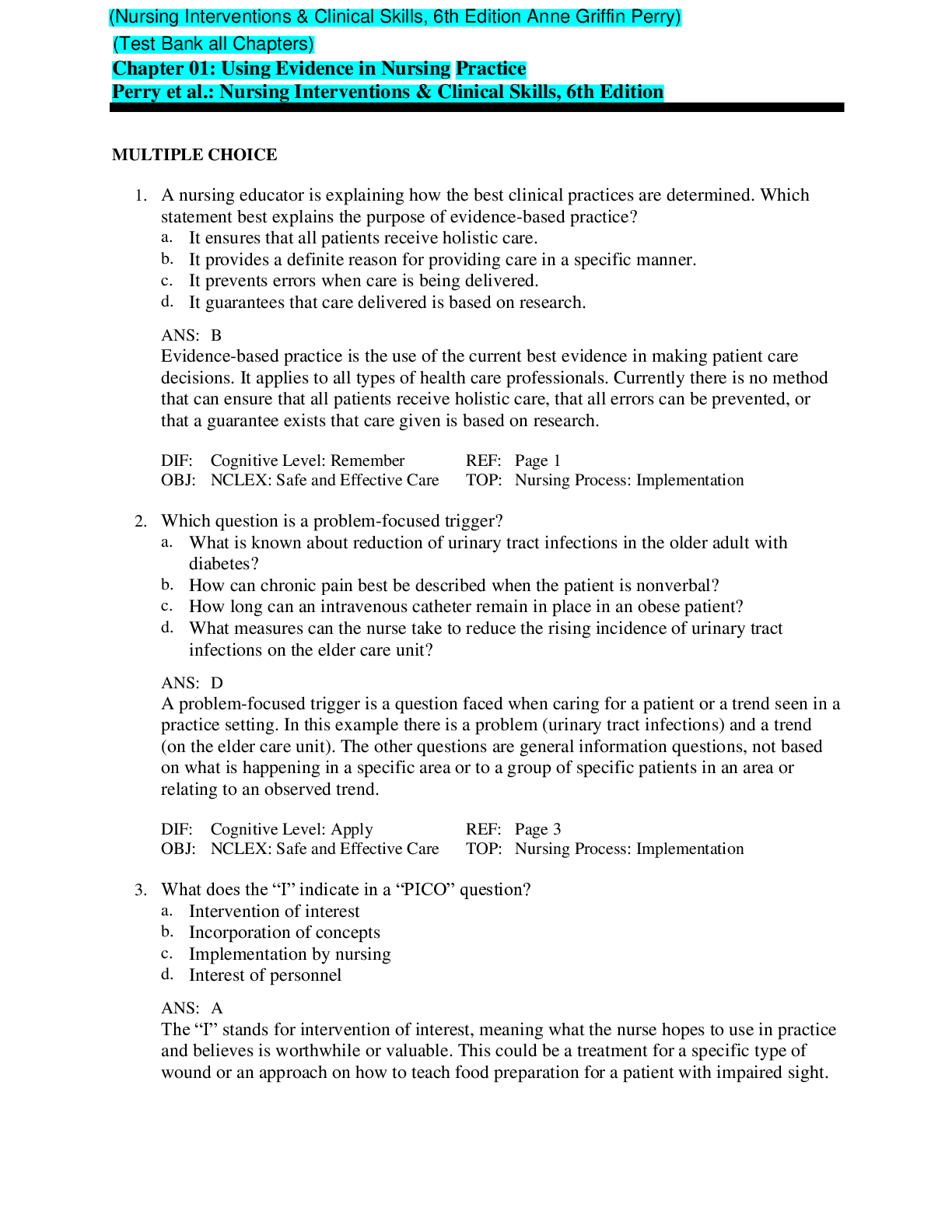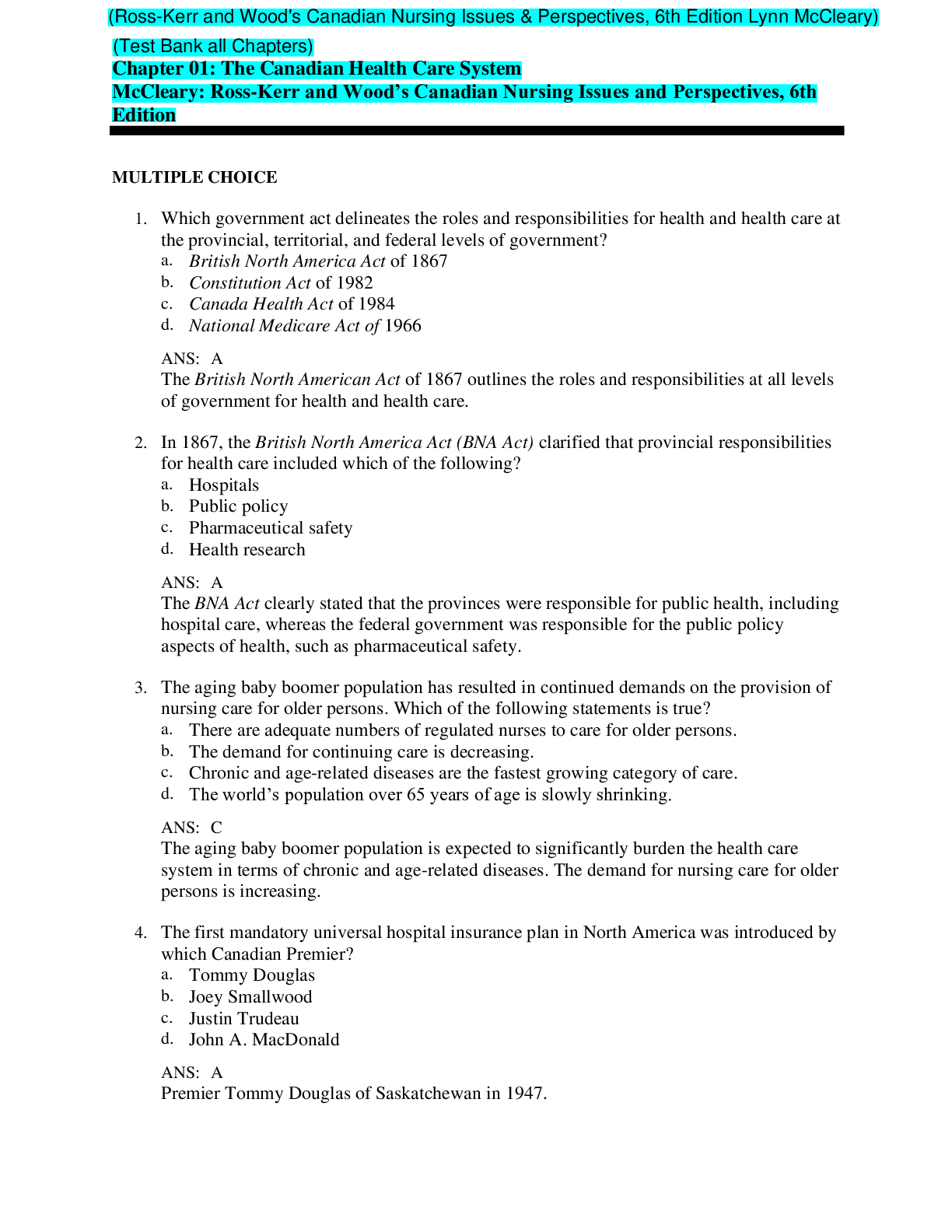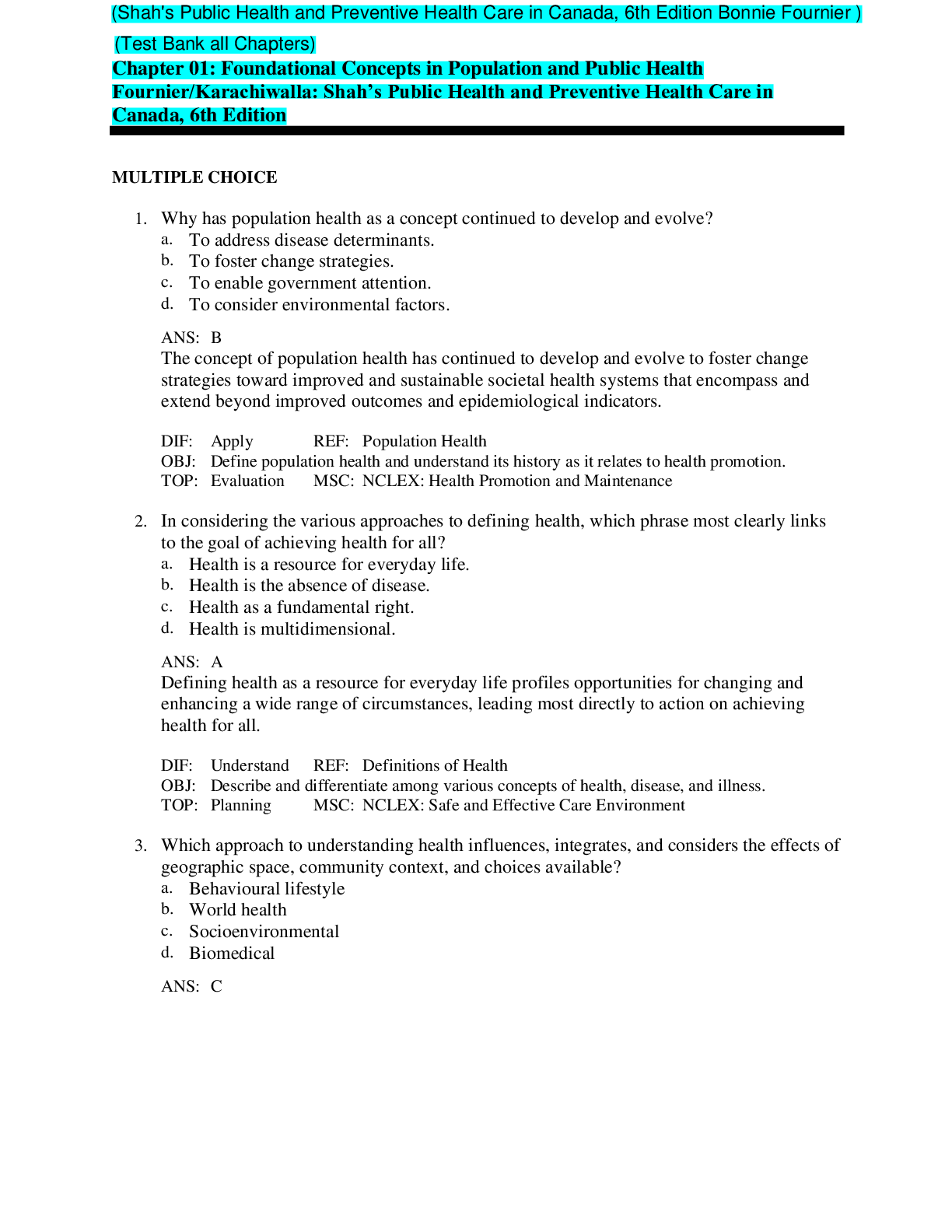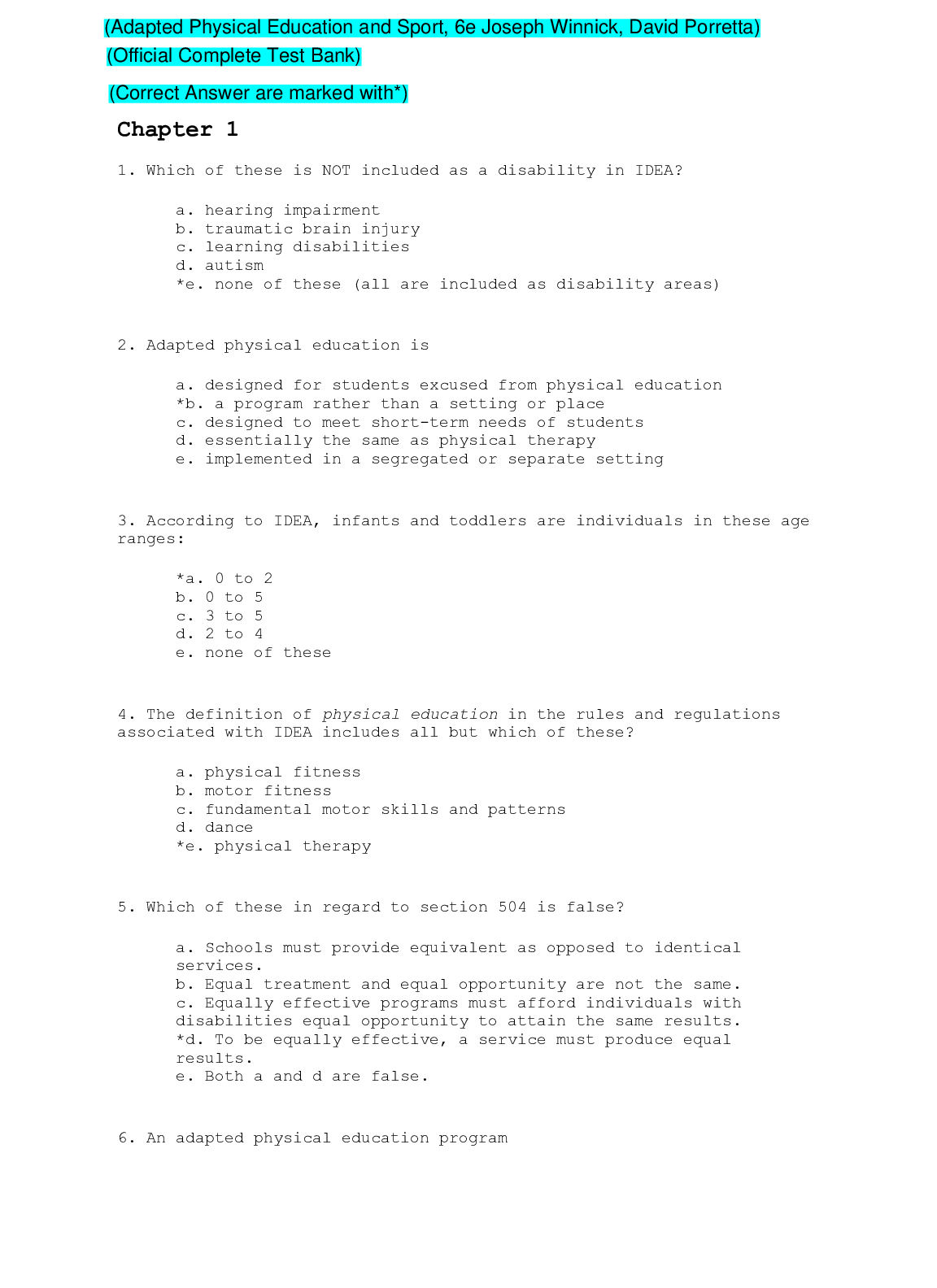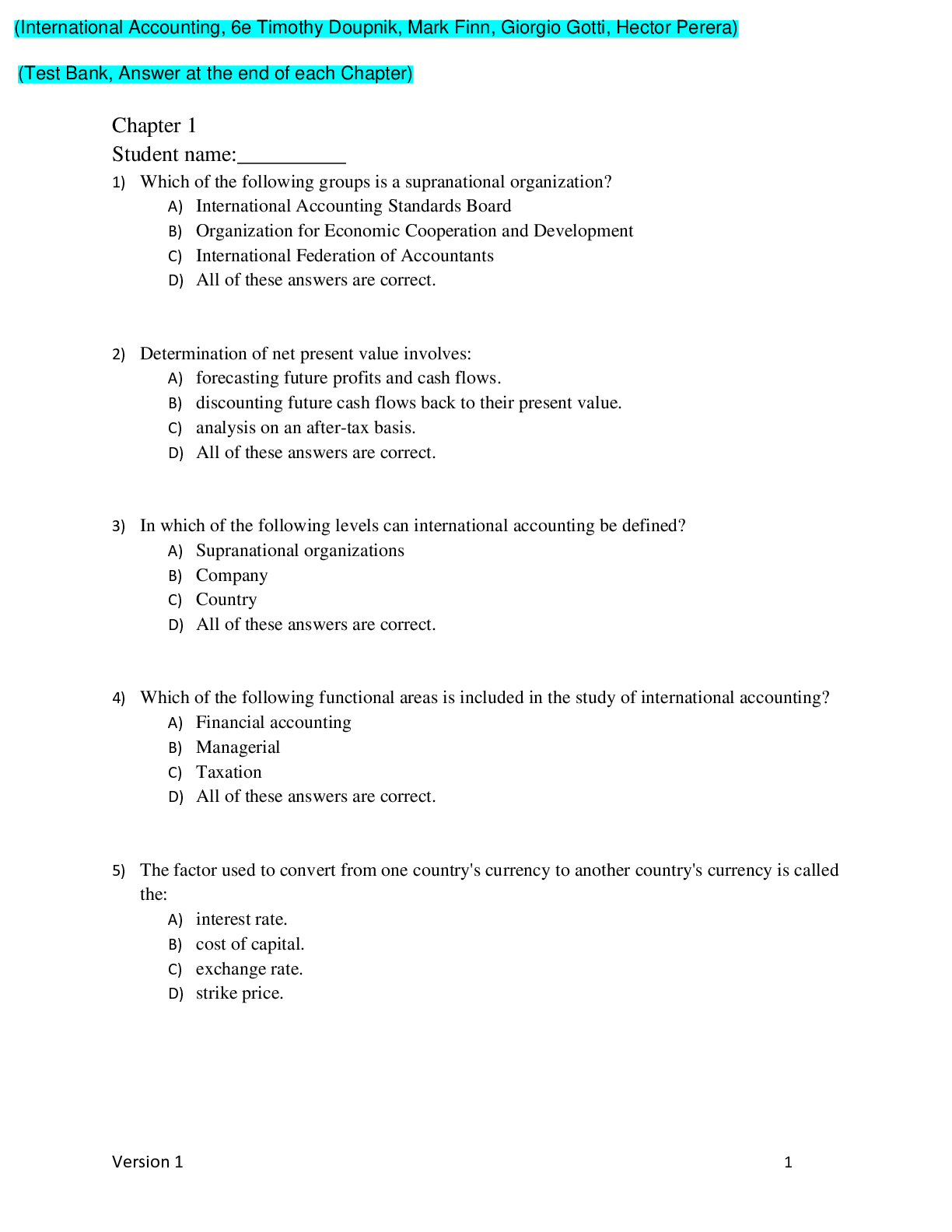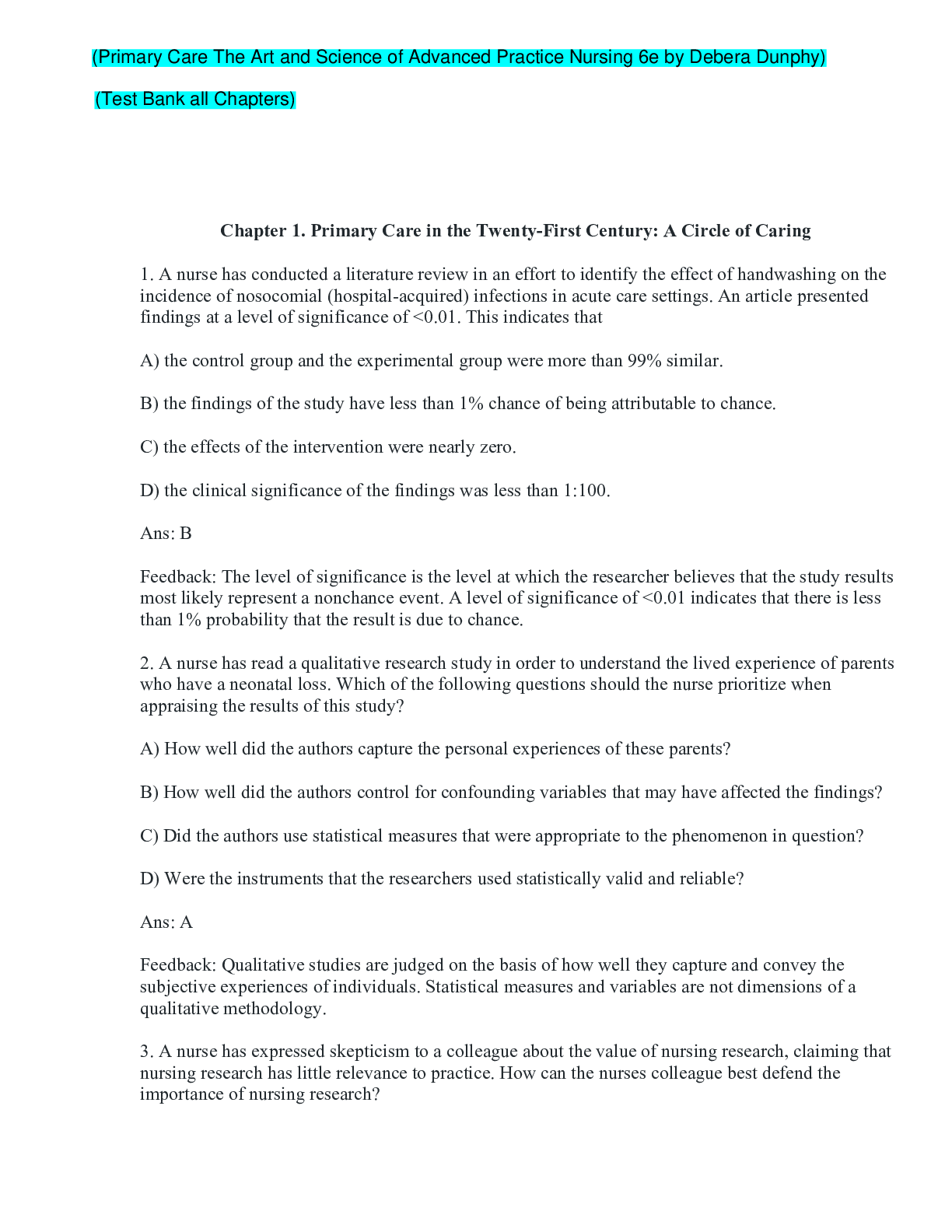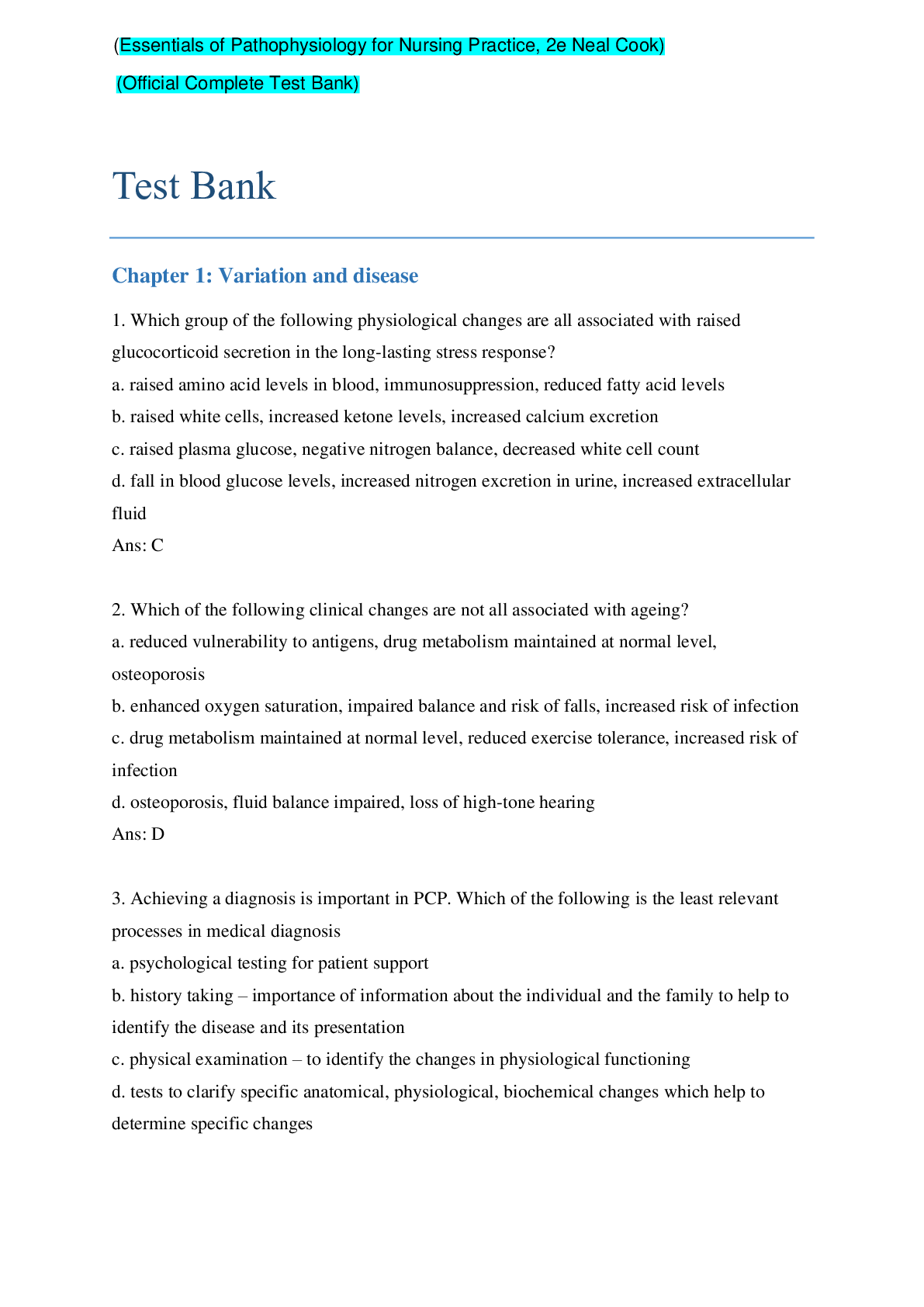*NURSING > TEST BANK > TEST BANK FOR HEALTH ASSESSMENT FOR NURSING PRACTICE 6TH EDITION BY WILSON Chapter 8: Nutritional As (All)
TEST BANK FOR HEALTH ASSESSMENT FOR NURSING PRACTICE 6TH EDITION BY WILSON Chapter 8: Nutritional Assessment
Document Content and Description Below
Chapter 8: Nutritional Assessment Test Bank MULTIPLE CHOICE 1. A patient with mild renal disease has been put on a 2200-calorie per day diet plan with the lowest recommended amount of protein.... During discharge teaching, the nurse explains to this patient how to use nutrition labels to determine the amount of protein in the product. The nurse explains, however, that the label is based on 2000 calories. Which is the appropriate formula to teach this patient the least amount of protein he can eat on his prescribed diet? a. 2200 calories 0.15 = 330/9 calories/gram = 36.6 g b. 2200 calories 0.10 = 220/4 calories/gram = 55 g c. 2200 calories 0.20 = 440/9 calories/gram = 48.8 g d. 2200 calories 0.12 = 264/4 calories/gram = 66 g 2. A patient is put on an 1800-calorie a day diet plan. During discharge teaching, the nurse explains to this patient how to use nutrition labels to determine the amount of carbohydrates in the product. The nurse explains, however, that the label is based on 2000 calories. Which is the appropriate formula to teach this patient of the maximum grams of carbohydrates she can eat on her prescribed diet? a. 1800 calories 0.45 = 810/4 calories/gram = 202.5 g b. 1800 calories 0.60 = 1080/4 calories/gram = 270 g c. 1800 calories 0.55 = 990/9 calories/gram = 110 g d. 1800 calories 0.50 = 900/9 calories/gram = 100 g 3. A patient tells the nurse that she tries to keep her fat intake at less than 15% of her total caloric intake per day. What is the nurse’s most appropriate response to this patient’s comment? a. “That is admirable; how do you accomplish fat intake that low on a daily basis?” b. “Eating fat is essential for good health, and you should consume about 40% of your fats as monounsaturated fat.” c. “Limiting fat prevents some diseases, but your fat intake is much lower than the 25% recommended.” d. “If you want to bring your fat intake down further, you might want to eliminate eating fast foods.” 4. A patient who keeps his fat consumption at 10% of his total caloric intake is at risk for deficiency of which nutrient(s)? a. Iron b. Vitamins A, D, and K c. Zinc d. B and C vitamins [Show More]
Last updated: 1 year ago
Preview 1 out of 16 pages
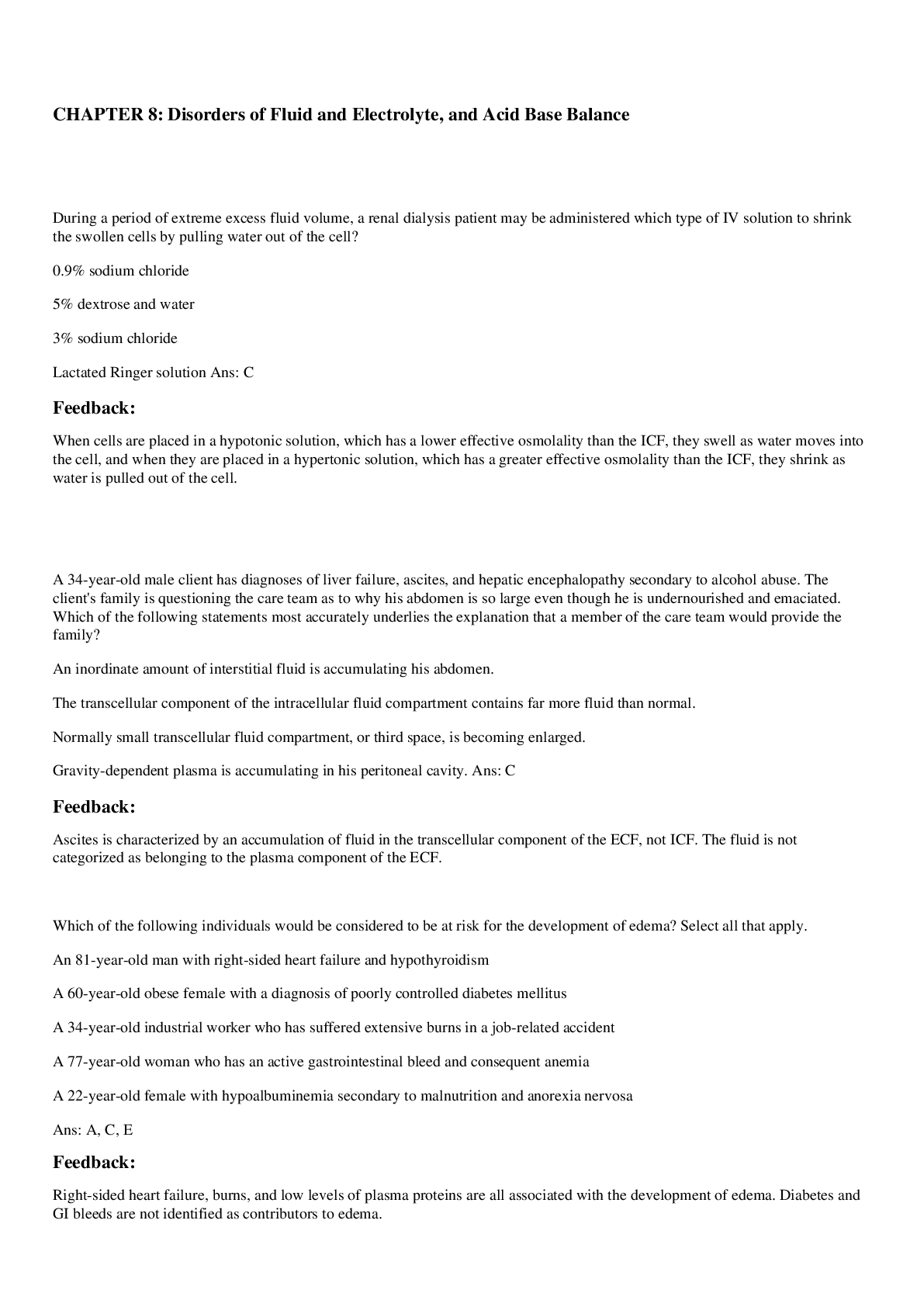
Reviews( 0 )
Document information
Connected school, study & course
About the document
Uploaded On
Feb 25, 2021
Number of pages
16
Written in
Additional information
This document has been written for:
Uploaded
Feb 25, 2021
Downloads
0
Views
65
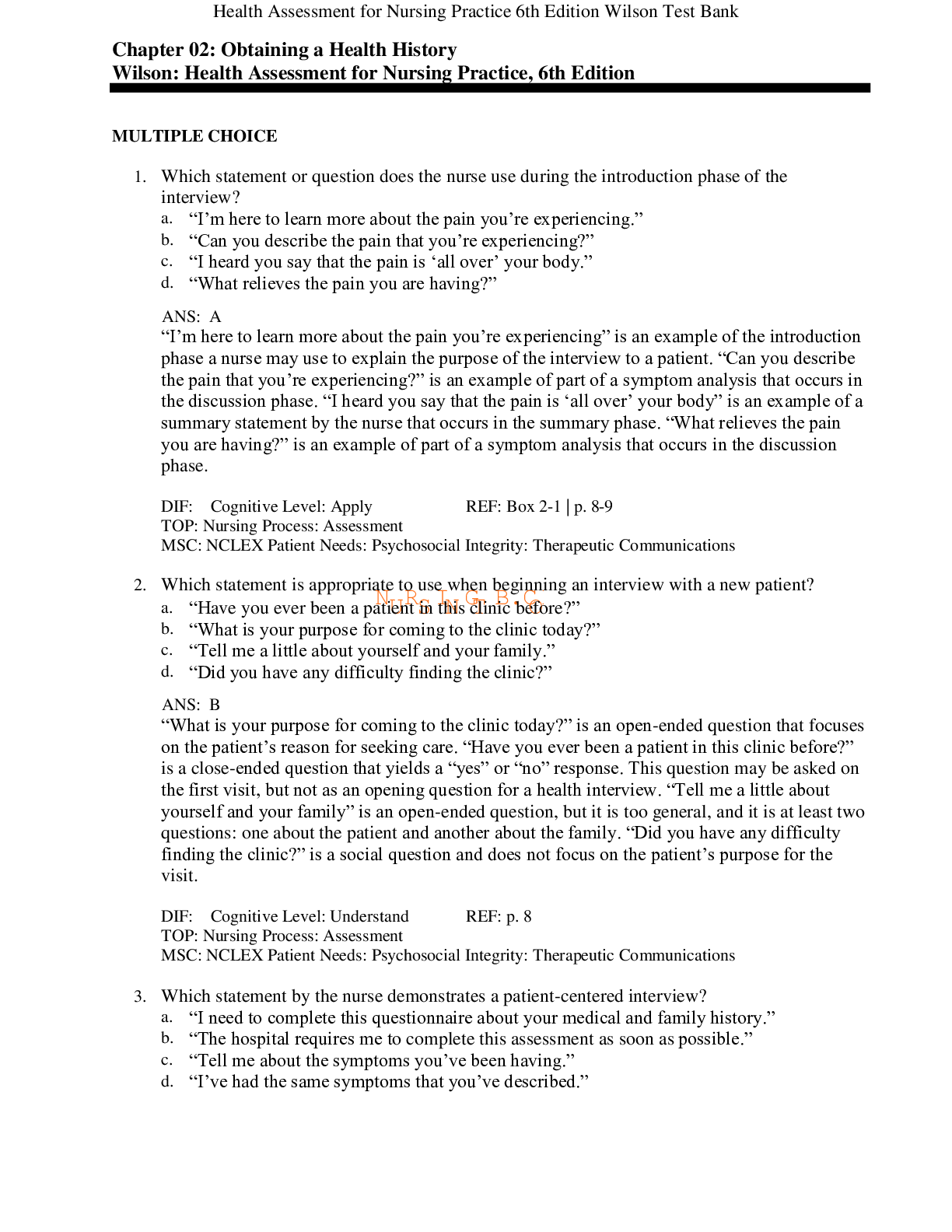




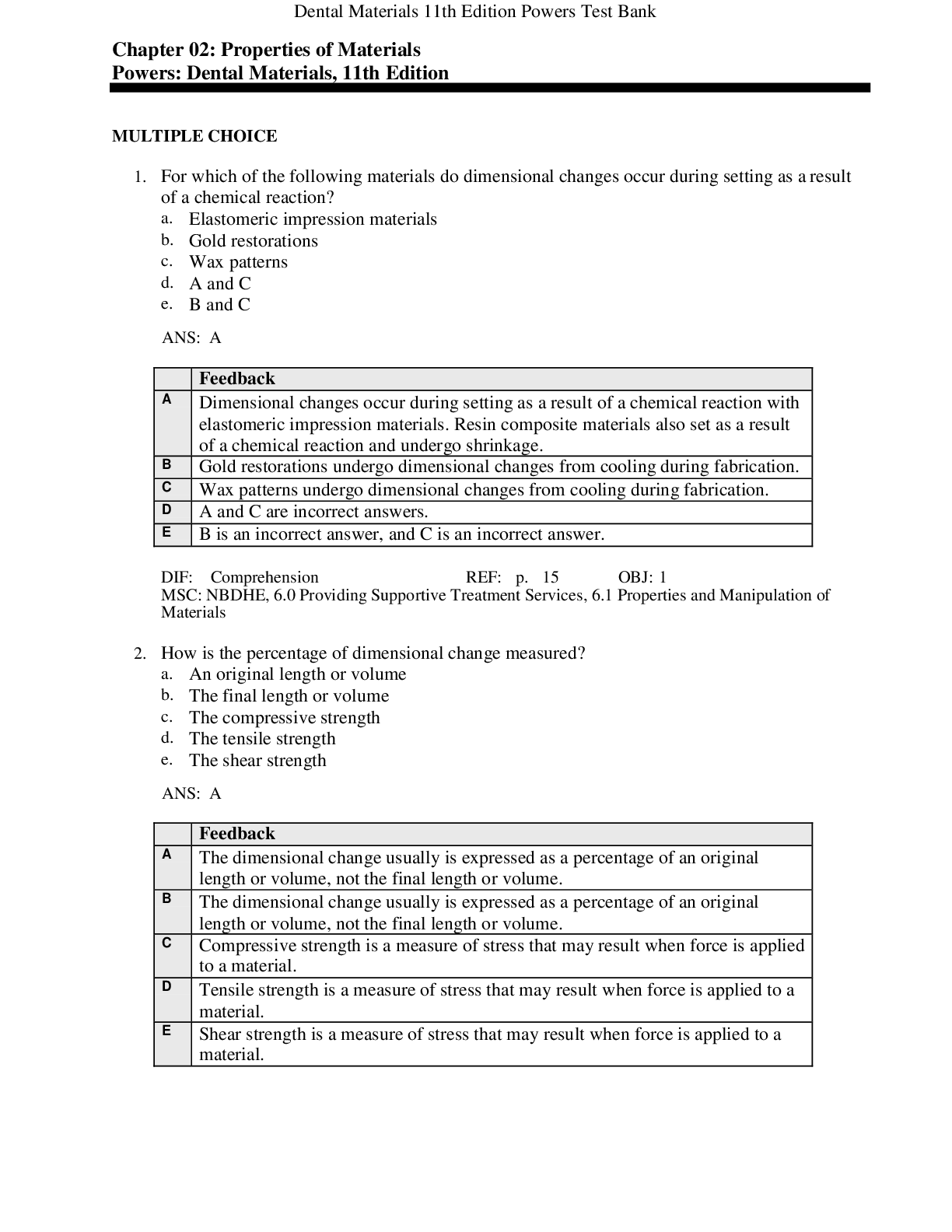
.png)
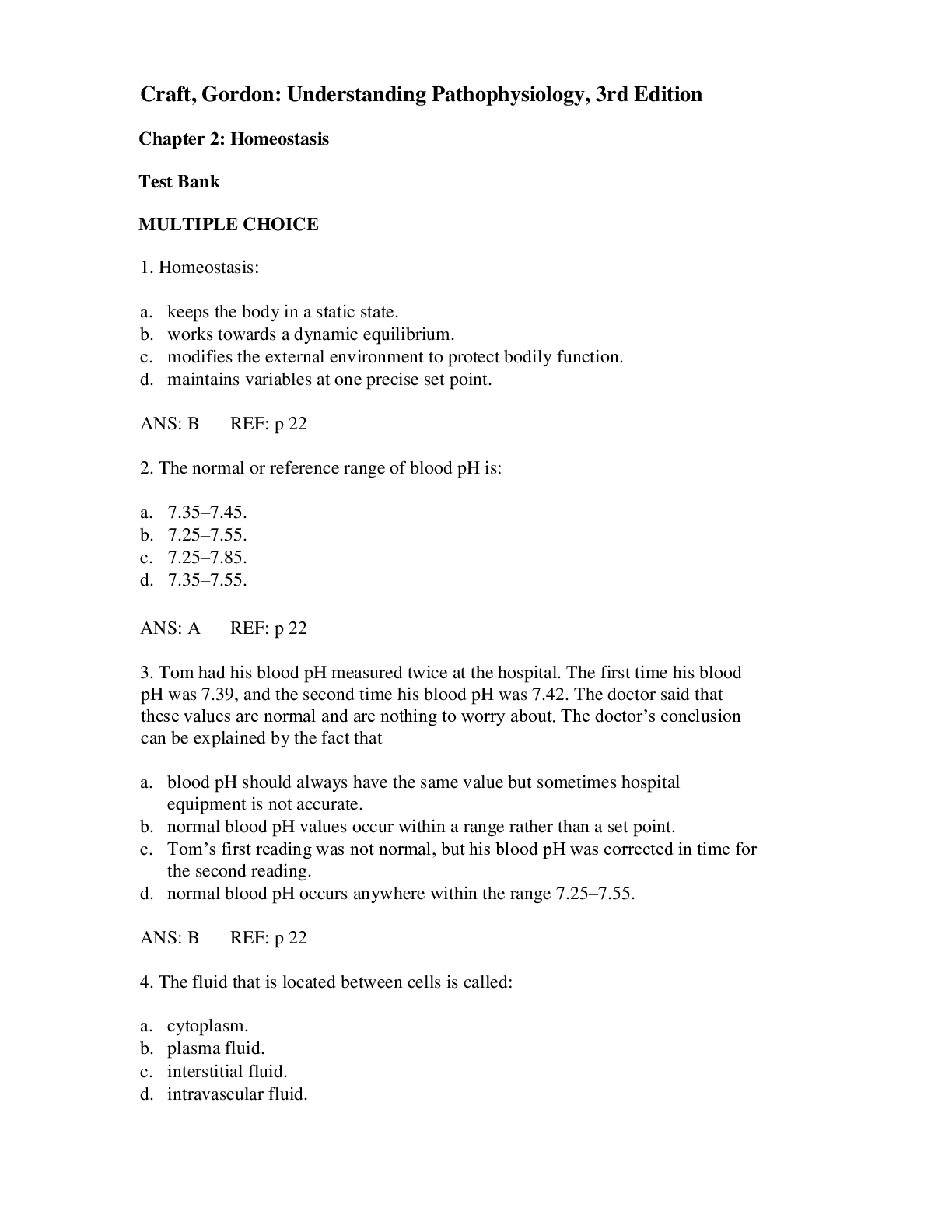
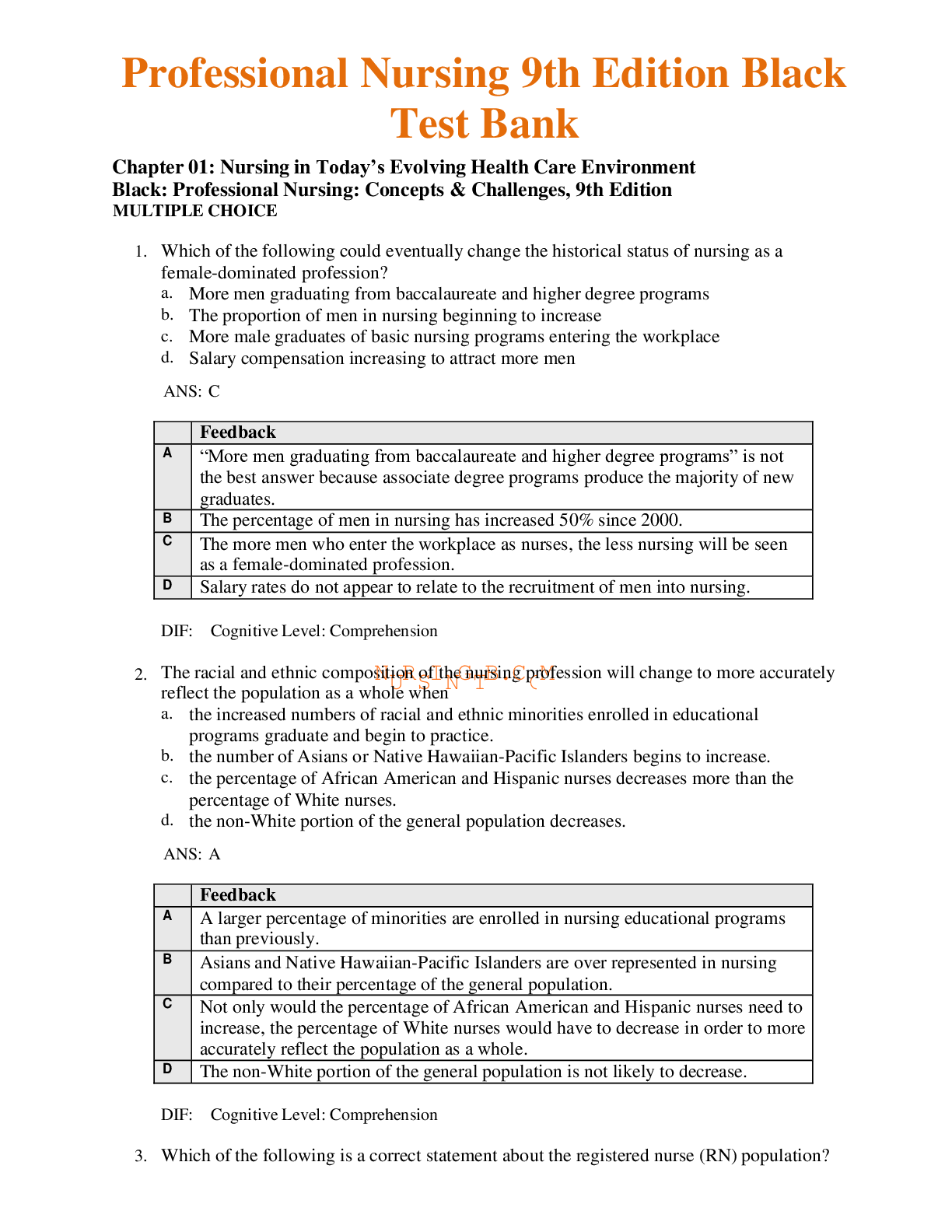
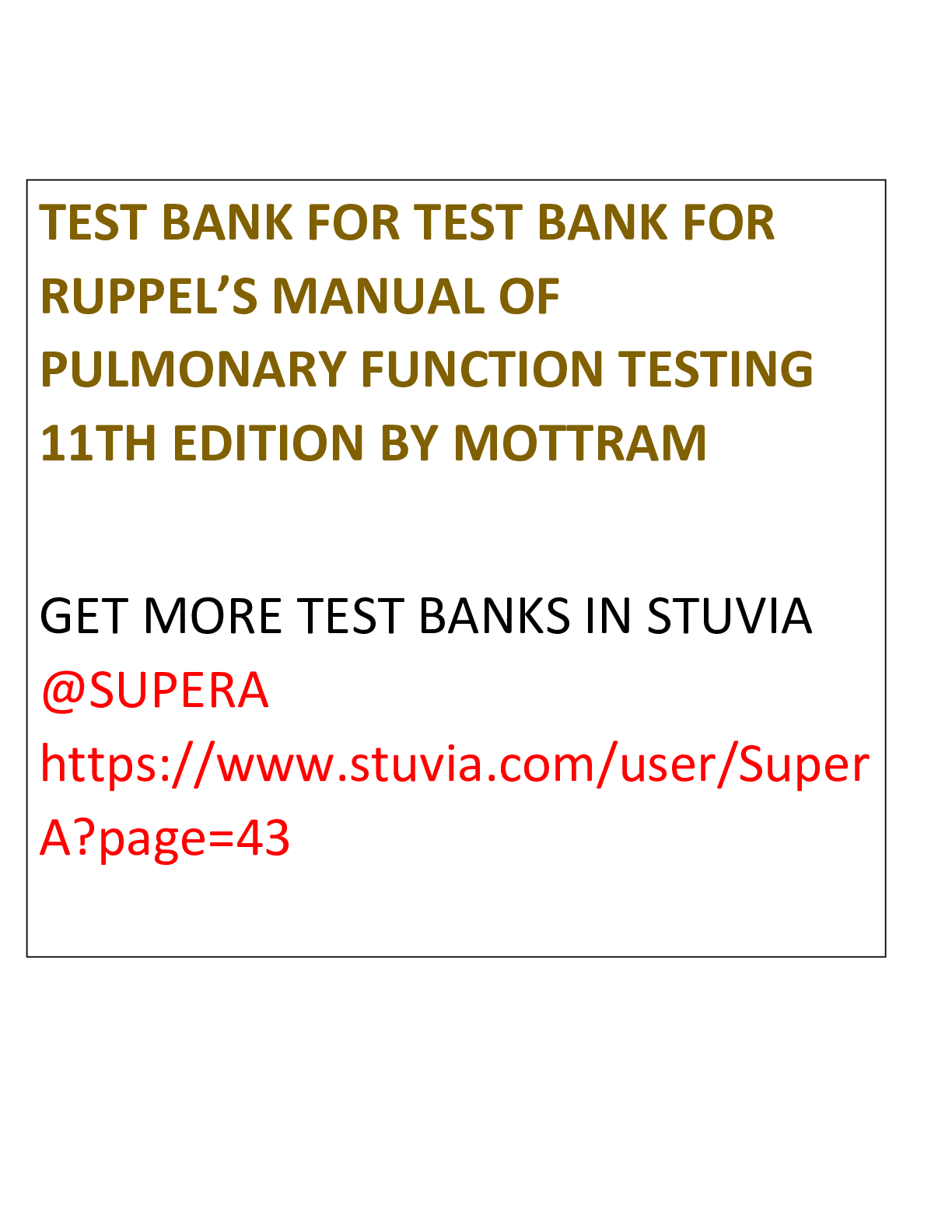

.png)
.png)
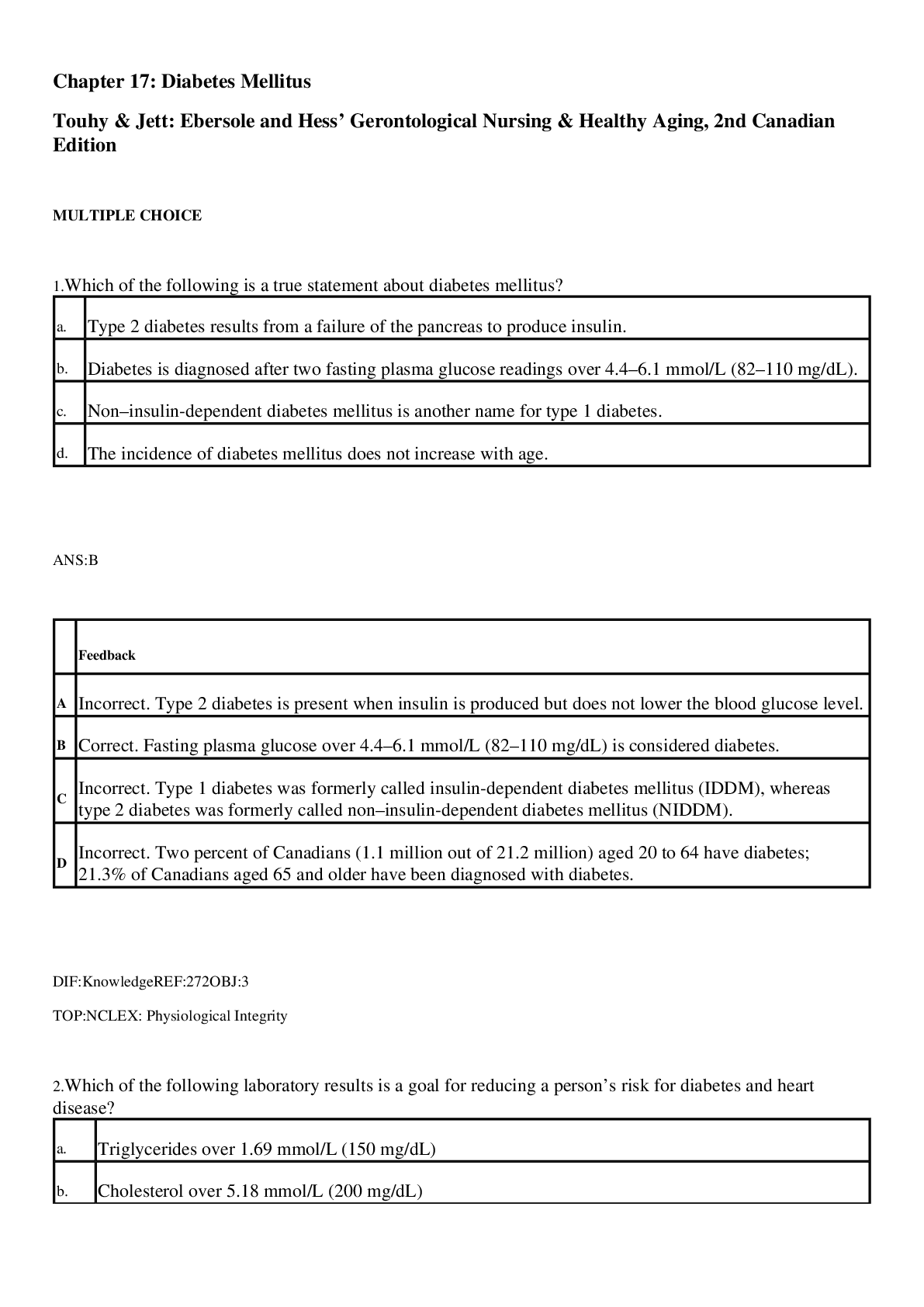
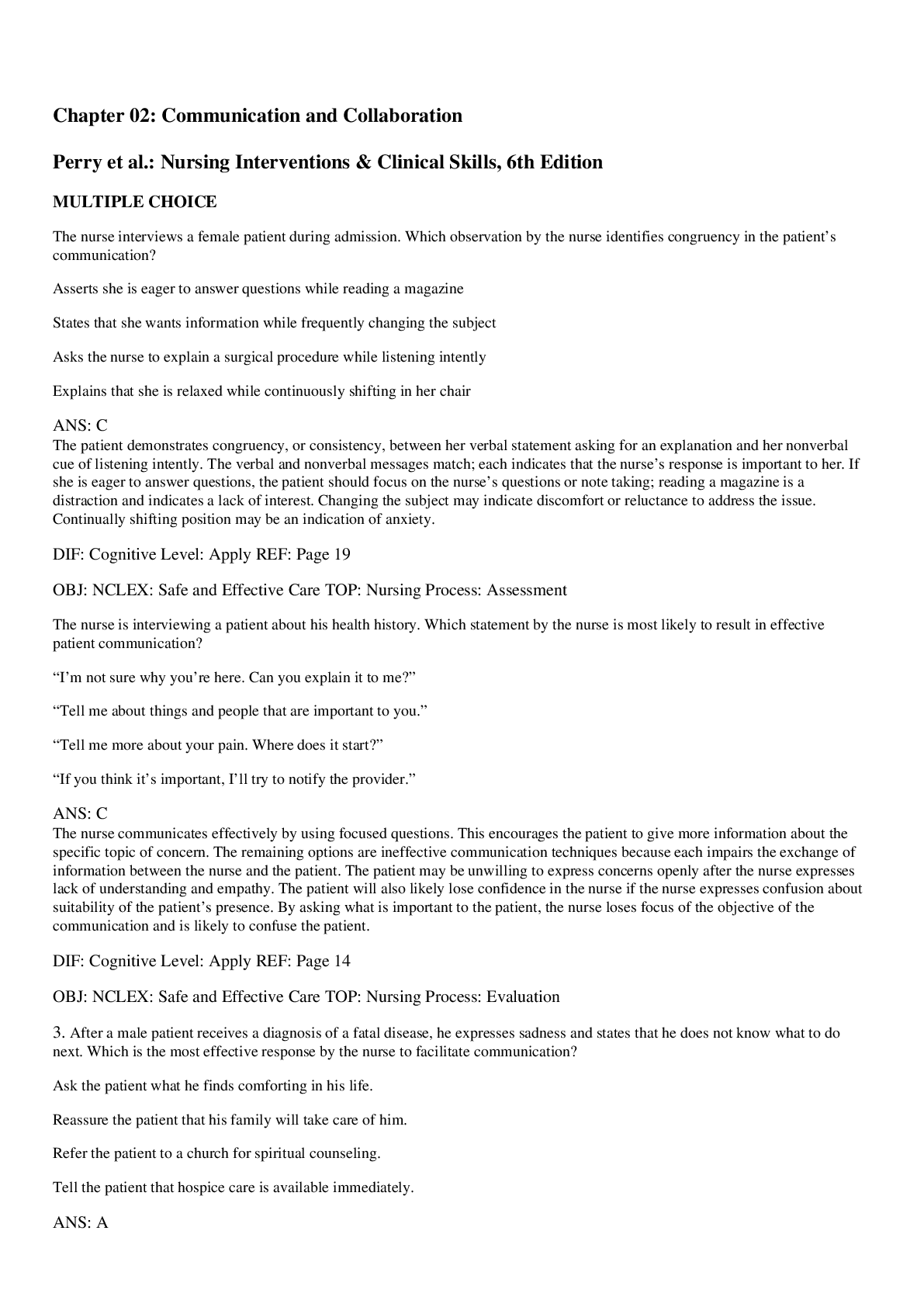
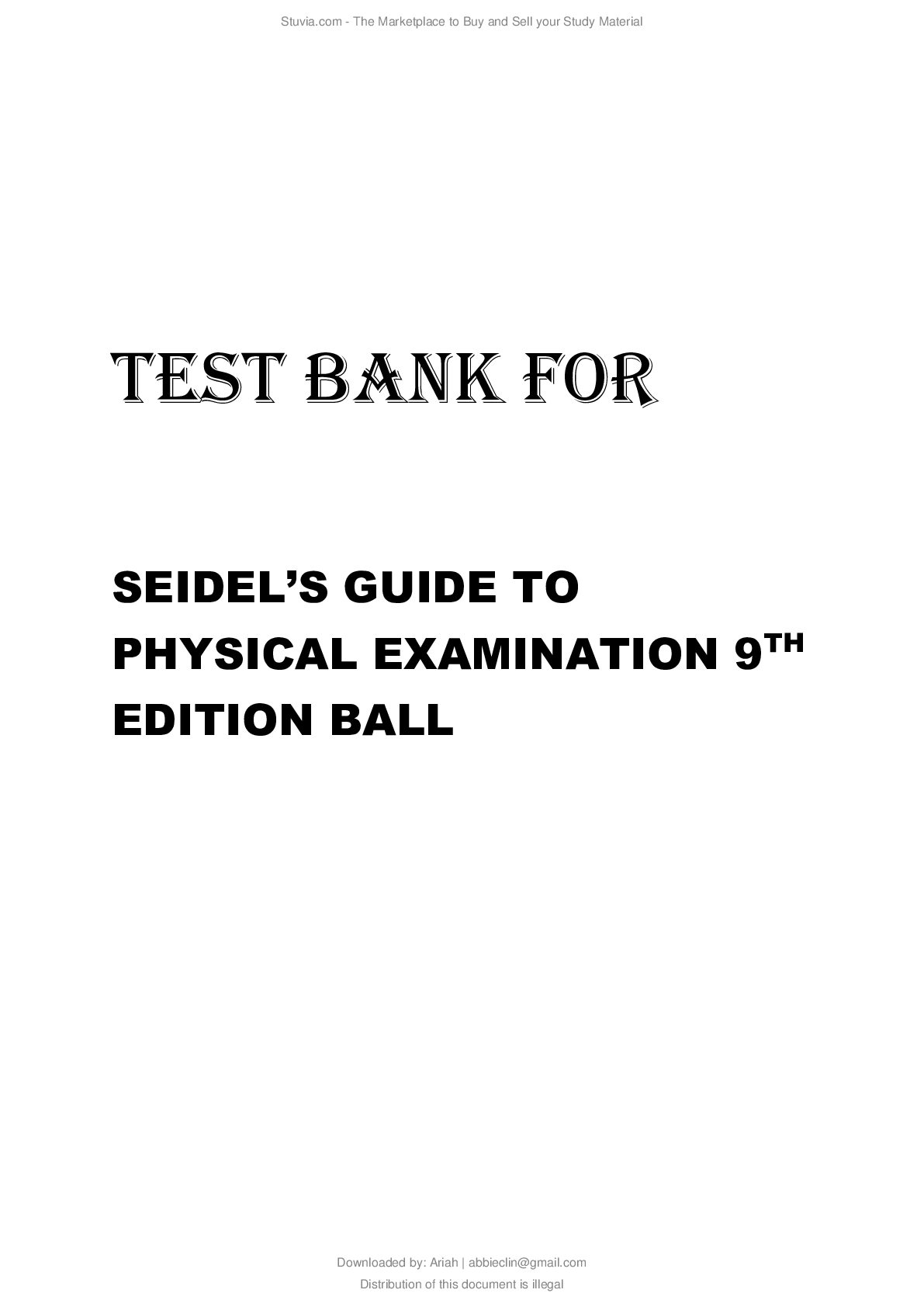


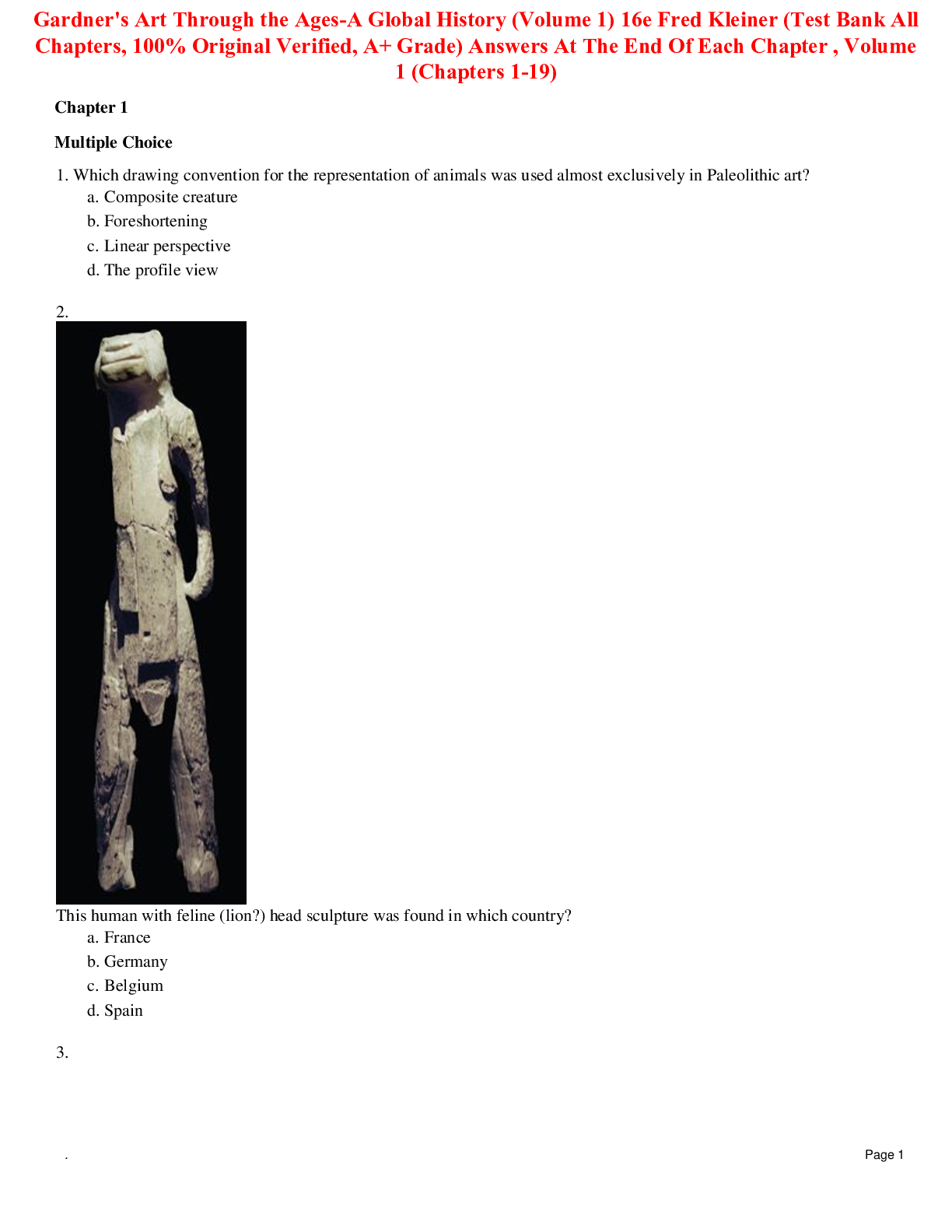
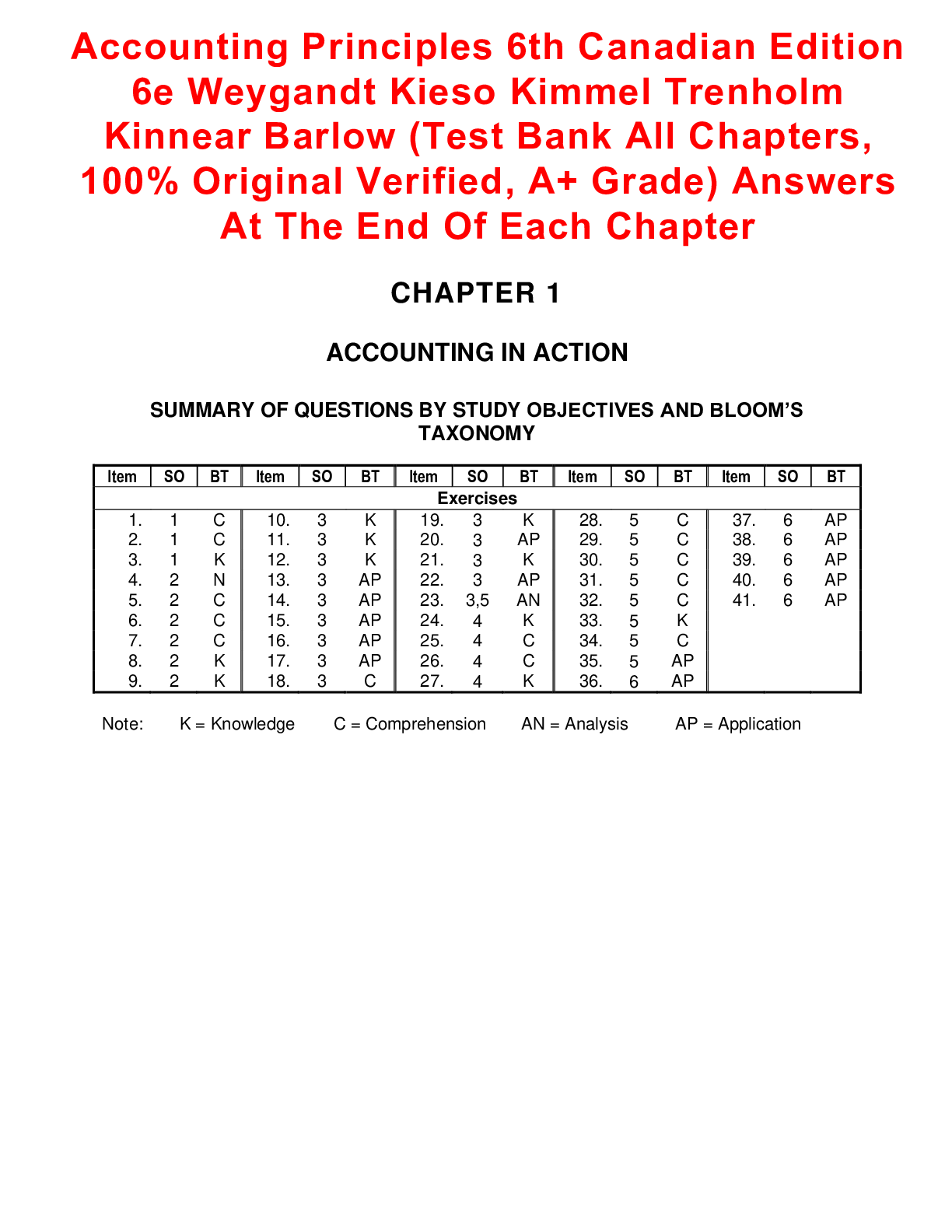
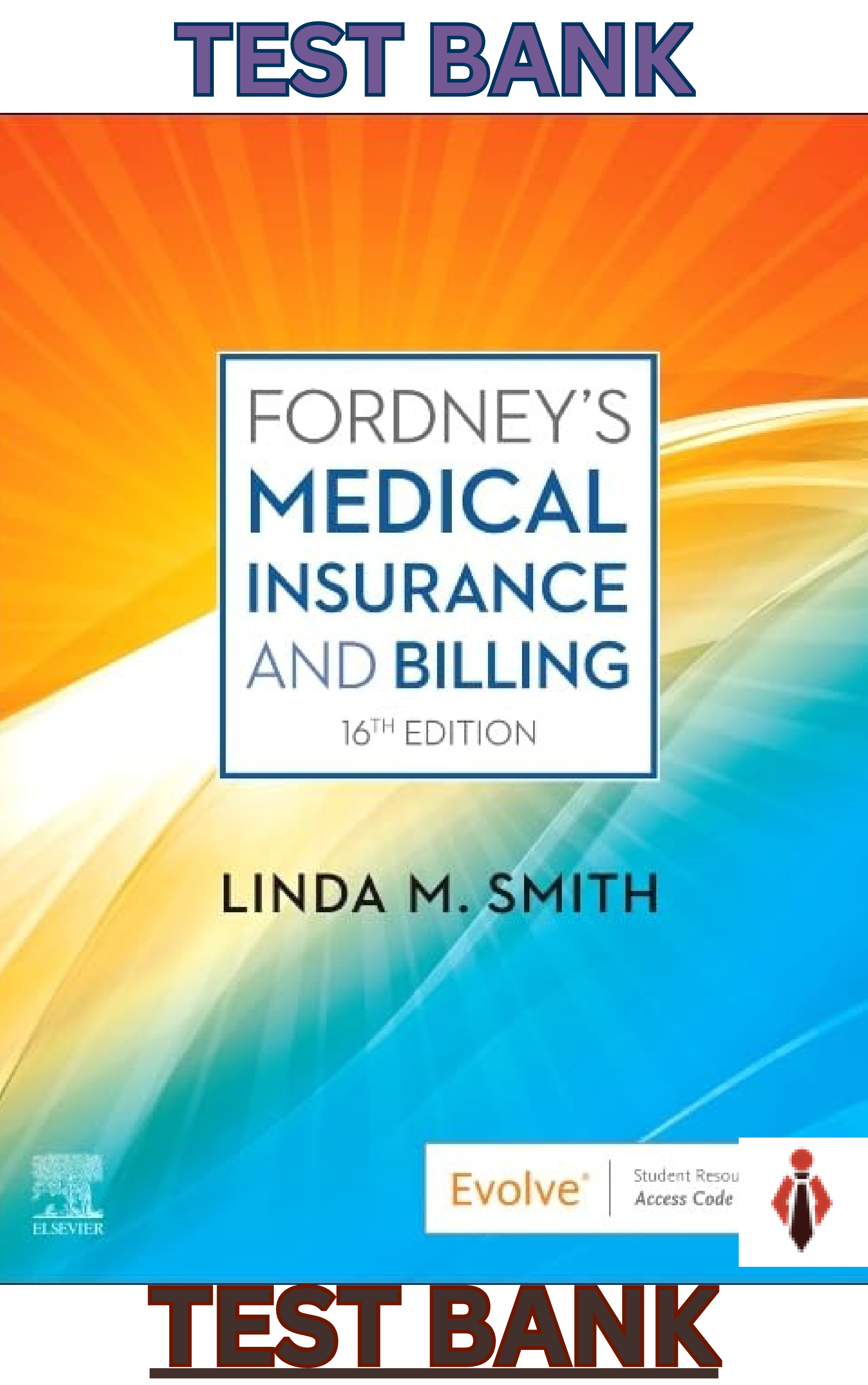

.png)
